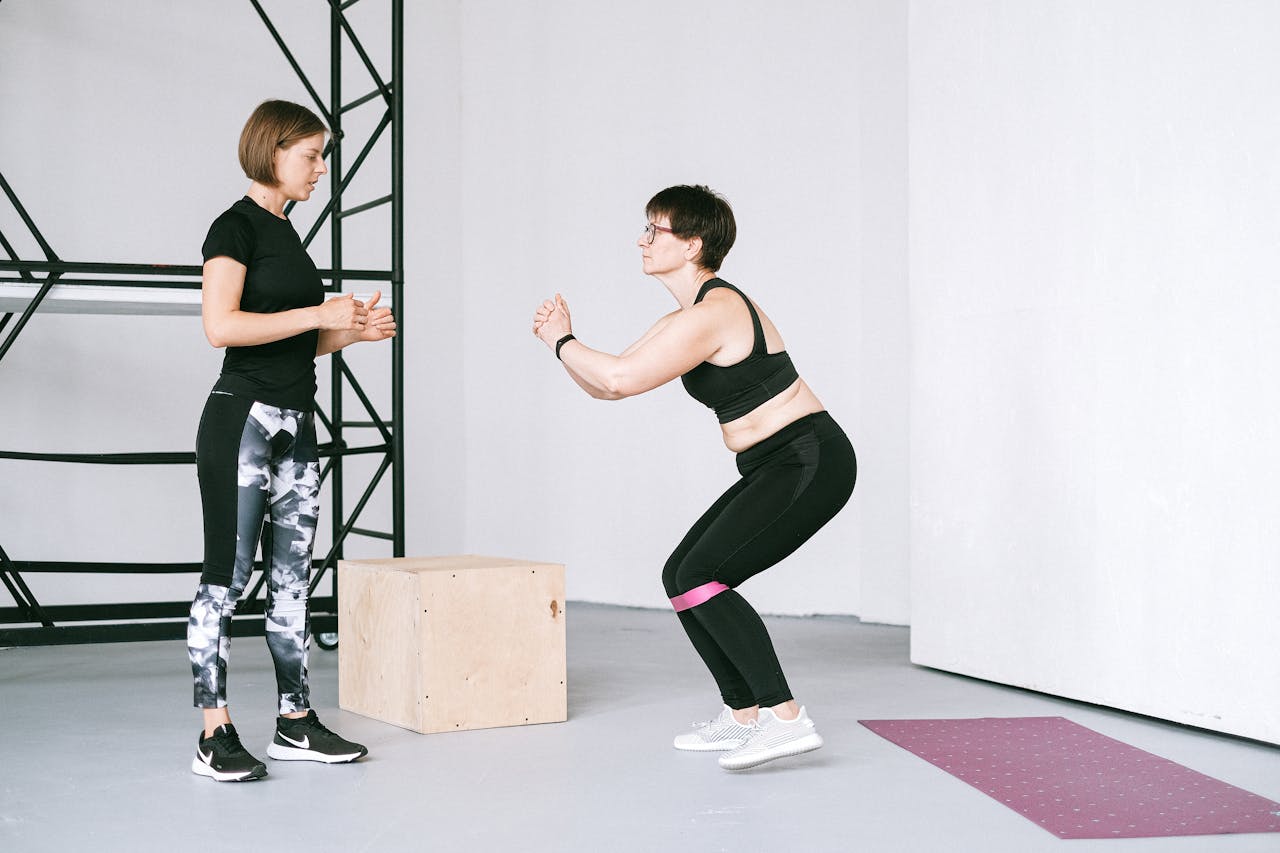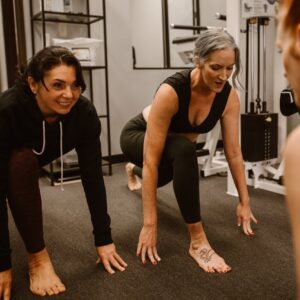Contents
Reaching your 50s is not the time to slow down—it’s the perfect time to assess and maintain the strength and mobility that support healthy aging. As muscle mass and function naturally decline with age (a process known as sarcopenia), strength testing becomes essential for tracking physical fitness, preventing falls, and maintaining independence.
These five strength and functional movement tests provide a clear snapshot of your current fitness. Backed by scientific research, they evaluate balance, muscular endurance, core control, and mobility. No gym is required—just your bodyweight and a few minutes.
1. One-Foot Balance Test
Your ability to balance on one leg reflects more than just coordination—it’s a key indicator of lower-body strength, stability, and even longevity. Studies have found that adults who struggle to balance on one leg for 10 seconds or more have a higher risk of falls and even mortality within the next decade.
How to Perform:

- Stand barefoot on a flat, solid surface.
- Cross your arms over your chest.
- Lift one foot off the ground, bending your knee slightly so your foot hovers above the floor.
- Time how long you can stay balanced without touching the raised foot down or using your arms for support.
- Repeat on the other leg.
Scoring
- Excellent: 30 seconds or more
- Good: 20–29 seconds
- Fair: 10–19 seconds
- Needs Work: Less than 10 seconds
How to Improve
Balance declines with age and increases fall risk. This simple test correlates strongly with fall risk in older adults. If your balance time is under 10 seconds, that’s a wake-up call. Poor balance doesn’t just raise your fall risk—it also signals weak stabilizing muscles in your hips, glutes, and core.
A. Start Simple: Build Static Balance
- Single-Leg Stands: Stand on one leg for 10–20 seconds, switching sides. If necessary, take support from a wall or chair. Gradually increase duration or try closing your eyes for an extra challenge.
- Heel-to-Toe Walks: Walk in a straight line, placing your heel directly in front of your toes. Go slow and controlled.
B. Strengthen Supporting Muscles
- Side-Lying Leg Raises: 2–3 sets of 15 reps per leg to target the outer hips.
- Glute Bridges: Strengthen glutes and stabilize your pelvis.
- Calf Raises: Do them barefoot if possible to strengthen feet and ankles.
C. Add Dynamic Balance Work
- Step-Ups: Use a low step or stair, drive through your heel, and balance briefly at the top.
- Single-Leg Deadlifts (bodyweight or light dumbbells): Strengthens posterior chain while forcing balance and control.
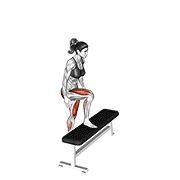
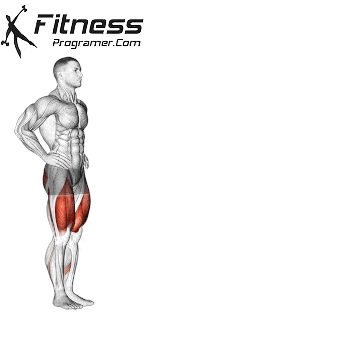
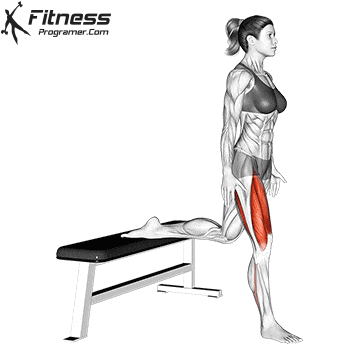
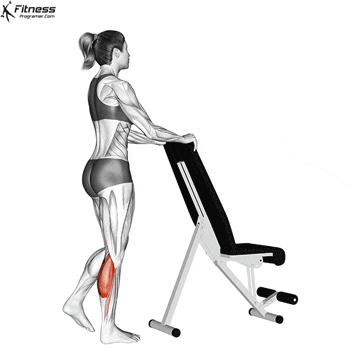
Pro Tip: Do balance work daily. Just 2–3 minutes while brushing your teeth or waiting for coffee can make a real difference over time.
2. Sitting-Rising Test (SRT)
The SRT is a validated predictor of all-cause mortality and functional independence. Flexibility, strength, coordination, and overall mobility. This test predicts how well your body can handle basic daily movements—like getting up from the floor or a low chair—without help. It’s a full-body snapshot of functional fitness.
How to Perform:
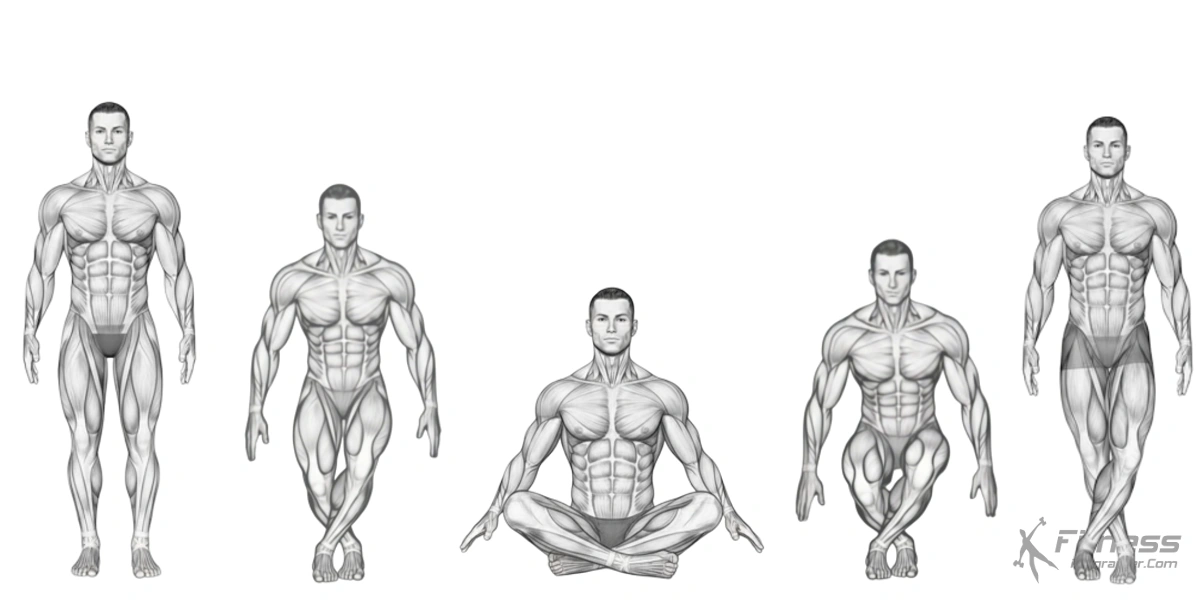
- Stand barefoot on a soft but firm surface (like a yoga mat).
- Cross your legs and lower yourself into a seated position on the floor without using your hands, arms, or knees for support.
- Then, try to stand back up the same way—no pushing with your hands, elbows, or knees.
- Use as few support points as possible. Every time you use a hand, knee, or elbow for help, you lose points.
Scoring
You start with 10 points:
- Subtract 1 point each time you use a hand, knee, or elbow to help.
- Subtract 0.5 points if you lose balance or look unsteady.
Results
- 8–10 points: Excellent mobility and functional strength.
- 6–7.5 points: Good, but could improve flexibility or leg strength.
- 3–5.5 points: Limited mobility—time to focus on flexibility, balance, and lower-body strength.
- Below 3: High risk for falls and movement limitations. Increased risk of mortality (Araújo et al., 2012)
How to Improve
If getting up from the floor feels like climbing Everest, that’s a sign your body’s not moving as efficiently as it could. The SRT challenges multiple systems: hip mobility, core control, coordination, and leg strength. If getting up or down feels awkward or stiff, your hips and ankles likely lack range of motion, and your legs may need more power.
A. Increase Hip and Ankle Flexibility
- 90/90 Hip Stretch: Sit on the floor with one leg in front and one behind (both bent at 90°). Lean forward slightly and breathe into tight spots.
- Deep Squat Holds: Use a wall or pole for support, sink into a squat, and hold for 20–30 seconds.
- Calf and Ankle Stretch: Keep ankles mobile so you can shift weight naturally.
B. Strengthen Lower Body
- Bodyweight Squats: Keep feet flat, chest tall, and go as low as your flexibility allows.
- Step-Ups: Mimic standing from a seated position, but with control.
- Glute Bridges or Hip Thrusts: Boost hip extension strength needed for rising from the floor.
C. Practice the Movement Itself
Once or twice a week, practice sitting and standing from the floor slowly, using fewer supports each time. Try different leg positions and surfaces (e.g., yoga mat, carpet).
Pro Tip: Train both directions — sitting down and getting up. Many people lower themselves carefully but push up quickly. Balance those out.
3. Wall Sit
Lower-body strength is critical for walking, climbing stairs, and preventing mobility decline. The wall sit tests lower-body endurance—specifically in your quadriceps, glutes, and hamstrings. These muscles power nearly every movement you make: walking, climbing stairs, lifting, and standing up. Strong legs equal independence and resilience as you age.
How to Perform:
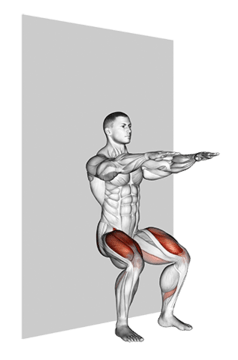
- Stand with your back flat against a wall.
- Slide down until your knees are at a 90° angle (as if sitting in an invisible chair).
- Hold this position as long as possible.
Scoring
- Excellent: 90 seconds or more
- Good: 60–89 seconds
- Fair: 30–59 seconds
- Needs Work: Less than 30 seconds
How to Improve
A wall sit under 30 seconds suggests declining leg endurance, which can make daily activities harder and increase fatigue. Weak quads and glutes lead to fatigue and instability, especially when standing or climbing stairs. The wall sit tests endurance, not just strength — so your goal is to hold longer under tension.
A. Strengthen the Quads and Glutes
- Bodyweight Squats: Perform 3 sets of 10–15 reps.
- Lunges: Step forward or backward, keeping knees stable.
- Step-Ups: Drive through your heel to engage the glutes and quads evenly.
B. Add Isometric Training
- Partial Wall Sits: Start at a 45° angle if 90° feels too hard. Increase depth gradually.
- Hold-and-Pulse Squats: Hold the bottom position for 10 seconds, then do 5 small pulses. Repeat 3–4 times.
C. Improve Endurance
Once your form is solid, increase time under tension:
- Add 10–15 seconds per week to your wall sit goal.
- Hold a light dumbbell or medicine ball once you can easily last over a minute.
D. Supportive Mobility Work
Tight hip flexors or hamstrings can limit your depth and cause knee strain. Stretch after training:
- Standing Quad Stretch
- Seated Hamstring Stretch
Pro Tip: If your knees ache, move your feet slightly forward and make sure your knees stay directly above your ankles, not past your toes.
4. Plank Hold
Core strength is key for posture, spinal support, and injury prevention—especially as we age. Your core isn’t just your abs—it’s everything from your shoulders to your hips. It stabilizes your spine, supports good posture, and powers nearly every movement. A weak core is often behind back pain and reduced balance.
How to Perform:
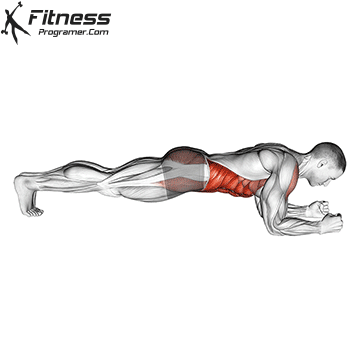
- Get into a forearm plank position with elbows under shoulders and body in a straight line.
- Engage your core and hold the position without sagging or piking your hips.
Scoring
- Excellent: 2 minutes or more
- Good: 90 seconds–1:59
- Fair: 45–89 seconds
- Needs Work: Less than 45 seconds
How to Improve
If you can’t hold a plank for 45 seconds, your core muscles might not be supporting your spine properly. The plank measures core endurance, not just ab strength. A strong core supports your back, improves posture, and enhances stability for all other movements.
A. Build Foundational Core Strength
- Modified Plank: Start on your knees. Aim for 30–45 seconds, maintaining perfect form.
- Dead Bug: Lie on your back, raise arms and legs, and lower opposite limbs slowly.
- Bird-Dog: From all fours, extend opposite arm and leg while keeping hips stable.
B. Gradual Plank Progression
- Add 10 seconds each week.
- Once you can hold for 2 minutes, move to plank variations:
- Side Planks: Target obliques.
- Plank Shoulder Taps: Add dynamic stability.
- Stir-the-Pot (on a stability ball): Engage deep core muscles.
C. Don’t Forget Your Posterior Chain
Core strength also depends on your back and glutes:
- Glute Bridges and Supermans strengthen back-side muscles that help maintain plank alignment.
Pro Tip: If your lower back hurts during planks, lift your hips slightly and tighten your glutes — you’re likely sagging and overloading the lumbar spine.
5. Modified Push-Up Test
Push-ups are a reliable measure of upper-body muscular fitness and even cardiovascular health (Yang et al., 2019). For people in their 50s, maintaining upper-body strength is key for posture, functional movement, and preventing injuries from daily lifting or carrying.

How to Perform:
- Start on the floor with your knees on the ground and hands slightly wider than shoulder-width.
- Keep your body straight from head to knees.
- Lower your chest until your elbows are at 90 degrees, then push back up.
- Move at a steady pace—no bouncing or collapsing.
- Count how many you can do in one minute without breaking form.
Scoring (for ages 50–59)
Men
- Excellent: 30+ reps
- Good: 20–29
- Fair: 10–19
- Needs Work: <10
Women
- Excellent: 25+
- Good: 15–24
- Fair: 7–14
- Needs Work: <7
How to Improve
This test measures not just muscle strength but endurance—how long your muscles can sustain effort. Struggling here? Focus on upper-body training two to three times per week with exercises like incline push-ups, resistance band presses, and dumbbell rows.
Even a few extra reps make a difference—upper-body strength supports better posture and protects your shoulders and spine as you age.
If you struggle here, the issue might not just be arm strength — it’s often weak shoulders, limited chest endurance, or underdeveloped triceps.
A. Strengthen the Movement Pattern
- Incline Push-Ups: Do push-ups with hands on a sturdy bench or countertop. Lower the surface as you get stronger.
- Negative Push-Ups: Lower slowly for 3–5 seconds, then reset. Builds control and strength fast.
- Knee Push-Ups: Focus on perfect form — body straight, chest to floor, full range.
B. Supportive Strength Work
- Resistance Band Presses: Simulate push-ups with resistance bands to reduce strain.
- Dumbbell Chest Press: Use moderate weight and controlled motion.
- Triceps Dips (Bench or Chair): Strengthens the pushing muscles behind your arms.
C. Improve Shoulder and Core Stability
Push-ups rely on shoulder control and core support:
- Scapular Push-Ups: Keep arms straight and squeeze shoulder blades together and apart.
- Plank Shoulder Taps: Keeps your torso stable under movement.
D. Gradually Increase Endurance
Start with 3 sets of push-ups (modified or incline), aiming to add 1–2 reps per week. Retest every 6–8 weeks to gauge progress.
Pro Tip: Keep elbows at a 45° angle from your body, not flared out — it protects your shoulders and engages your chest more effectively.
How to Use These Tests
1. Do Them Regularly
Test yourself every 3–4 months. Keep a simple notebook or spreadsheet of your scores. Tracking progress gives you motivation and highlights where your training is paying off—or where you need to refocus.
Train Smart, Not Hard:
At 50+, recovery time matters. Spread these improvements across the week:
- Balance & Mobility: 5–10 min daily
- Strength Work: 3 days/week
- Core & Endurance: 2–3 days/week
2. Warm Up Before Every Session
A few minutes of dynamic movement — arm circles, hip circles, or gentle marching — primes your joints and prevents injury.
3. Look for Patterns, Not Perfection
No one aces all five tests. Maybe your balance is great, but your core endurance is weak. Or you can plank forever but struggle with the SRT. Each test targets a different system—strength, stability, coordination, mobility, and endurance. Your goal isn’t a perfect scorecard—it’s to identify your weak spots and strengthen them.
4. Make Improvements Gradual
If one test exposes a weakness, don’t panic. Instead, pick 2–3 exercises that address it and work on them consistently for 6–8 weeks. For example:
- Poor balance → try single-leg stands, heel raises, and yoga tree pose.
- Weak core → build up with planks, dead bugs, and stability ball rollouts.
- Low leg endurance → do wall sits, lunges, or stair climbs.
- Limited mobility → incorporate stretching, foam rolling, or tai chi.
5. Use These as Functional Fitness Benchmarks
These aren’t gym bragging rights—they’re everyday fitness skills. They help you:
- Get up safely if you fall.
- Move with confidence without losing balance.
- Carry groceries, climb stairs, or travel without fatigue.
- Protect joints and spine through strength and alignment.
6. Re-Test, Reassess, Refocus
As your scores improve, increase difficulty: hold the plank longer, squat deeper, or switch from modified to full push-ups. If one test remains stubborn, it’s worth seeing a physical therapist or certified trainer to pinpoint mobility restrictions or muscle imbalances.
7. Don’t Forget Recovery
At 50 and beyond, recovery is part of the equation. Adequate sleep, protein-rich meals, and stretching are as crucial as your workouts. Your body still adapts and strengthens—you just have to give it the right fuel and rest.
The Bottom Line
Fitness in your 50s isn’t about how fast you can run or how heavy you can lift—it’s about what you can do with your body. Can you balance on one leg? Sit and rise from the floor? Hold your body steady? Push your own weight? These tests answer those questions honestly.
If your scores are lower than you’d like, don’t see them as failures—they’re roadmaps. Each test points you toward areas you can strengthen for a healthier, more capable, and more confident decade ahead.
Aging is inevitable. Weakness is optional.
Test yourself. Train smart. Stay strong.
References
- Araújo, C. G., et al. (2012). “Ability to sit and rise from the floor as a predictor of all-cause mortality.” European Journal of Preventive Cardiology, 21(7), 892–898.
- McGill, S. (2010). Ultimate Back Fitness and Performance.
- Springer, B. A., et al. (2007). “Normative values for the unipedal stance test with eyes open and closed.” Journal of Geriatric Physical Therapy, 30(1), 8–15.
- Yang, J., et al. (2019). “Push-up capacity and future cardiovascular events in active adult men.” JAMA Network Open, 2(2), e188341.
- American College of Sports Medicine (ACSM). (2017). ACSM’s Guidelines for Exercise Testing and Prescription (10th ed.).

